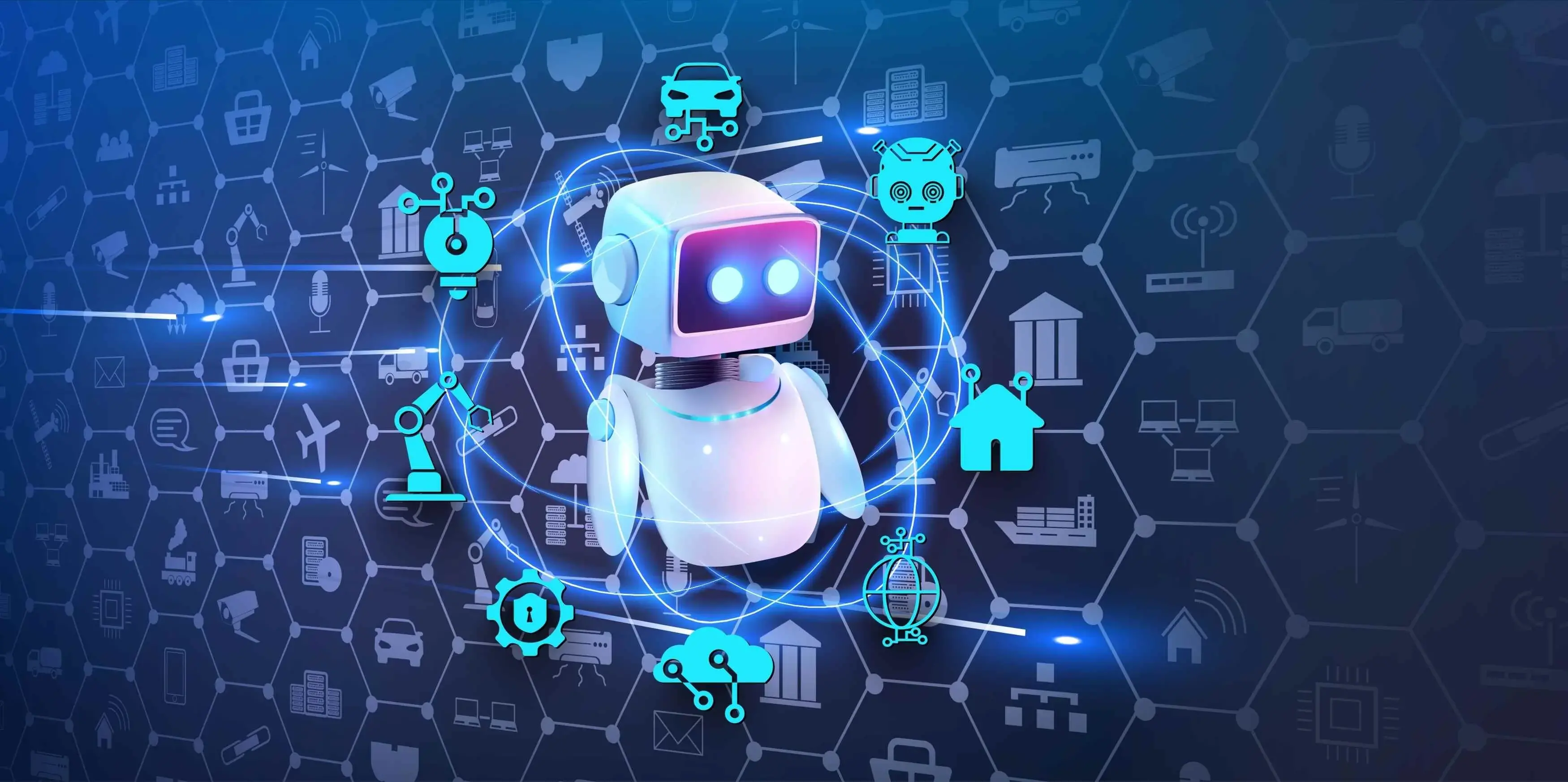A chatbot is a computer program or artificial intelligence (AI) application designed to simulate human conversation through text or speech interactions. Chatbots are 24/7 virtual shop assistants in eCommerce, transforming online shopping by providing immediate assistance to customers, even outside of business hours.
Relevance and Growth in eCommerce
The eCommerce sector has seen an unprecedented surge in recent years, with online shopping becoming an integral part of our lives. And accompanying this boom, chatbots have emerged as a pivotal tool for businesses. Here's why they are indispensable:
1. Always On, Always Helpful: Chatbots never sleep. They are available 24/7 to assist customers, address queries, and facilitate purchases, no matter the time zone or the customer's schedule. This round-the-clock availability is a game-changer for eCommerce.
2. Personalization at Scale: With advanced AI and machine learning capabilities, chatbots can analyze customer preferences and behavior to offer personalized product recommendations. This not only boosts sales but also enhances the shopping experience.
3. Instant Gratification: Shoppers today expect quick responses. Chatbots can provide instant answers to frequently asked questions, reducing customer frustration and cart abandonment rates.
4. Cost-Effective Customer Service: While providing excellent customer service is essential, it can also be expensive. Chatbots help businesses reduce the load on human customer support agents, handling routine queries and freeing up humans for more complex issues.
5. Data-Driven Insights: Chatbots collect valuable data on customer interactions, preferences, and pain points. This data can be leveraged to refine marketing strategies, product offerings, and overall customer experience.
6. Lead Generation and Sales: Chatbots can engage with website visitors, answer product-related questions, and guide them through the purchase process. They can also upsell or cross-sell additional products, thereby increasing sales and conversion rates.
In the world of eCommerce, where competition is fierce and customer demands evolve, chatbots are a vital tool for staying ahead. They provide convenience, personalization, and efficiency, ensuring that the online shopping experience remains seamless and enjoyable.
As we delve deeper into the eCommerce sector's transformation, it becomes evident that chatbots are not just a trend but the future of customer service and engagement. So, when yo shop online and get instant help, remember it could be a chatbot enhancing your experience.
Evolution of Chatbots in eCommerce

Historical Context:
Chatbots have a rich history dating to the mid-20th century, with early versions like ELIZA in the 1960s. ELIZA, though basic by today's standards, pioneered pattern-matching techniques for simulating conversations, it laid the groundwork for future developments.
Advancements in Functionality and Sophistication:
Rule-Based Systems (1960s-1990s): Early chatbots like ELIZA operated on predefined rules and patterns. They could engage in basic conversations but lacked true understanding or learning capabilities. They were limited in scope and primarily used for experimentation.
AI and Machine Learning (2000s-Present): The real transformation of chatbots came with advancements in artificial intelligence and machine learning. These technologies enabled chatbots to learn from data and improve their responses over time. Natural Language Processing (NLP) emerged as a critical component, allowing chatbots to understand and generate human-like text.
Personalization and Recommendations: With eCommerce growth, chatbots became pivotal in offering personalized product suggestions. They analyze user behaviour, purchase history, and preferences to boost sales and satisfaction.
Omnichannel Integration: Chatbots extended beyond websites to messaging apps and social media, enhancing customer interaction across preferred platforms.
Voice Assistants and Conversational AI: Voice-activated chatbots like Amazon's Alexa and Google Assistant brought chatbots into our homes and cars. These advanced chatbots understand spoken language, perform tasks, and provide information, bridging the gap between eCommerce and smart devices.
Humanoid and Visual Chatbots: Some eCommerce platforms explore visual chatbots with images and videos for customer engagement. Humanoid chatbots with avatars or virtual assistants enhance interactive experiences.
Emotional Intelligence: Recent developments have focused on equipping chatbots with emotional intelligence. These chatbots can recognize and respond to users' emotions, adapting their tone and responses accordingly, enhancing the overall user experience.
Data-Driven Insights: Modern eCommerce chatbots are not just tools for customer engagement; they are valuable sources of data. Businesses use chatbot interactions to gain insights into customer behaviour, preferences, and pain points, enabling data-driven decision-making.
Chatbots have gone from experimental novelties to essential tools that enhance customer support, personalization, and sales. As technology advances, they will play a more integral role in eCommerce enhancing shopping experiences globally.
Benefits of Using Ecommerce Chatbots
Improved Customer Service
Chatbots can provide instant responses to customer inquiries, resolving common issues and answering frequently asked questions. This ensures that customers receive prompt assistance, leading to higher levels of satisfaction.
Increased Sales and Conversions
Chatbots are effective at offering product recommendations based on customer preferences and purchase history. This personalized approach can lead to higher sales and conversion rates as customers are more likely to purchase items that align with their interests and needs.
24/7 Support
Chatbots are available round the clock, providing 24/7 support to customers. This continuous availability is crucial for global eCommerce businesses with customers in different time zones. It ensures that assistance is never limited by business hours.
Personalized Shopping Experiences
Chatbots leverage AI and machine learning to analyze customer data and behavior. This enables them to offer tailored product suggestions, discounts, and content that align with individual preferences. Personalization enhances the shopping experience and encourages repeat business.
Cost Savings
Chatbots can handle routine and repetitive customer queries, reducing the workload on human customer support agents. This leads to cost savings for businesses as they can allocate human resources to more complex and value-added tasks.
Data Collection and Insights
Chatbots collect valuable data on customer interactions, preferences, and pain points. This data can be analyzed to gain insights into customer behavior, enabling businesses to refine their marketing strategies and product offerings.
Key Features of Effective Ecommerce Chatbots

Natural Language Processing (NLP)
NLP, a fundamental feature for chatbots in eCommerce enhances chatbots by making them understand and generate human-like text, improving customer interactions. It enables chatbots to comprehend queries, respond effectively, and enhance the overall customer experience.
EBay's ShopBot uses NLP to understand user queries and offer personalized, product recommendations. Shoppers can ask questions in natural language, such as "Show me men's running shoes under $50," and ShopBot uses NLP to process this query and display relevant search results.
Integration with eCommerce Platforms
An effective chatbot should seamlessly integrate with the eCommerce platform, providing real-time access to product information, inventory data, and customer accounts. This enables accurate information, assists with product searches, and facilitates transactions, leading to a smoother shopping process.
Shopify's Kit, an AI marketing assistant, is integrated with Shopify's eCommerce platform, accessing sales data, product information, and customer records. This integration helps merchants with tasks like creating marketing campaigns and generating reports based on this integrated data.
Personalization and Recommendation Algorithms
Personalization drives customer satisfaction and sales in eCommerce. Effective chatbots use recommendation algorithms that analyze user behaviour, purchase history, and preferences to suggest relevant products, offer tailored promotions, and enhance the shopping experience. Understanding individual customer needs boosts engagement and conversion rates.
Amazon, known for its personalized product recommendations employs recommendation algorithms that take into account a user's browsing history, previous purchases, and shopping cart items. These algorithms power the "Customers who bought this also bought" and "Recommended for you" sections on the website.
Multilingual Support
Effective chatbots communicate in multiple languages, expanding eCommerce reach, increasing accessibility, and building trust with international customers who prefer to shop in their native language.
IKEA, a global furniture retailer, offers multilingual support on its website and chatbot. Customers from different countries can interact in their native languages, simplifying product inquiries, stock checks, and assistance in their preferred language.
Considerations When Implementing a Chatbot

Choosing between Rule-Based vs. AI-Driven Chatbots
When choosing between chatbot types, consider rule-based for common queries with predefined scripts and AI-driven for complex conversations using AI and natural language processing. The decision depends on task complexity and the desired user interaction level.
Pros and Cons of Rule-Based Chatbots
Pros
Cons
Pros and Cons of AI-Driven Chatbots
Pros
Cons
User Experience (Design, Responsiveness, etc.):
- A seamless user experience is critical. Chatbots should be well-designed, with an intuitive interface and responsive interactions.
- User feedback and testing are essential to refine the chatbot's design and ensure it meets user expectations.
- Responsiveness, both in terms of speed and accuracy, is crucial for keeping users engaged and satisfied.
Handling Complex Queries and Transferring to Human Agents
- Chatbots should be equipped to handle a variety of queries, but there will always be situations that require human assistance.
- Implementing a smooth transition process from chatbot to human agents is vital. Users should not experience frustration when they need human intervention.
- Clearly define the criteria for when a query should be escalated to a human agent to ensure a balance between automation and a human touch.
Data Security and Privacy Concerns
- Protecting customer data is non-negotiable. Implement robust security measures to safeguard sensitive information.
- Ensure compliance with data protection regulations such as GDPR or HIPAA, depending on your industry and location.
- Regularly audit and update security protocols to stay ahead of emerging threats.
The Future of Chatbots in Ecommerce

Predictive Analytics for Better Personalization
eCommerce chatbots will use predictive analytics for more personalized experiences by analyzing historical data, including past purchases, browsing behaviour, and demographics, to anticipate customer needs and preferences.
Customers will receive product recommendations and promotions that are highly relevant to their individual tastes and needs. This level of personalization will lead to increased customer satisfaction and higher conversion rates.
Integration with AR/VR for Enhanced Shopping Experiences
Chatbots will integrate with Augmented Reality (AR) and Virtual Reality (VR) technologies to provide immersive shopping experiences. Customers can virtually try clothing, visualize furniture at home, and experience products more realistically.
Shoppers will have a more engaging and tactile online shopping experience, reducing uncertainty and hesitation when making online purchases. This integration will lead to a significant boost in customer confidence and may result in reduced return rates.
Greater Collaboration Between Humans and Bots
The future of eCommerce chatbots will involve more collaborative interactions between chatbots and human customer support agents. Chatbots will handle routine inquiries and tasks, seamlessly handing off complex or sensitive issues to human agents when necessary.
Businesses will strike a balance between automation and the human touch, delivering efficient responses while maintaining the personalized and empathetic support of human agents. This approach will enhance overall customer service and satisfaction.
Advanced Conversational AI and Multimodal Interfaces
Chatbots will become more advanced in their understanding of natural language, tone, and context. They will also support multimodal interactions, allowing customers to switch between text, voice, and visual interfaces during a single conversation.
Customers will enjoy more fluid and flexible interactions with chatbots, making it easier to express their needs and preferences. This flexibility will accommodate diverse communication styles and accessibility needs.
Expanded Use of Chatbots in Post-Purchase Customer Care
Chatbots will extend their role beyond pre-purchase interactions to post-purchase customer care. They will assist with order tracking, returns, refunds, and product support, providing a comprehensive end-to-end customer experience.
Businesses will streamline post-purchase processes, reducing customer effort and enhancing satisfaction. Customers will appreciate the convenience of easily accessing order information and resolving issues through chatbots.
Advanced AI and multimodal interfaces will enhance natural, flexible interactions. Chatbots will expand into post-purchase customer care, revolutionizing online shopping for more efficient, engaging, personalized experiences, benefiting businesses and consumers alike.
Conclusion
Embrace chatbots in your eCommerce strategy for personalization, customer engagement, and efficiency. Stay ahead in the evolving eCommerce landscape, delight customers, and seize growth opportunities. Do not miss the chatbot revolution; it's your key to a customer-centric future.
Frequently Asked Questions
Are chatbots suitable for small eCommerce businesses?
Chatbots can benefit businesses of all sizes by improving customer service, personalization, and efficiency. There are chatbot solutions tailored to the needs and budgets of small eCommerce businesses.
How can I ensure data security with chatbots?
To protect customer data, implement encryption, access control, and regularly update your chatbot's security measures. Comply with data protection regulations and provide transparent privacy policies.
What are some chatbot platforms I can use for eCommerce?
Popular chatbot platforms include ChatGPT by OpenAI, Dialogflow by Google, Microsoft Bot Framework, and many more. Choose a platform that aligns with your specific needs and goals.
Can chatbots handle all customer queries or are human agents still needed?
Chatbots excel at routine queries but may require human agents for complex or sensitive issues, achieving a balance between automation and human touch.
How do chatbots integrate with existing eCommerce platforms?
Chatbots integrate by connecting to eCommerce databases, inventory systems, and customer databases, ensuring access to real-time product data and customer information.
Are there specific industries within eCommerce that benefit most from chatbots?
Chatbots benefit industries like fashion, beauty, electronics, and customer support where personalization, product recommendations, and 24/7 support are crucial.
What are the data security implications of using chatbots for eCommerce?
Data security requires encryption, access controls, and compliance with regulations. Mishandling customer data can lead to legal and reputational consequences.
Are there any significant drawbacks or challenges in implementing chatbots for eCommerce?
Challenges include initial setup complexity, the need for continuous optimization, and ensuring that chatbots don't frustrate users with incorrect responses.
How do I determine if my eCommerce business needs a chatbot?
Assess your customer service needs, the complexity of inquiries, and the desire for personalization to decide if a chatbot is a valuable addition.
Can I integrate a chatbot with my existing CRM and customer service tools?
Yes, chatbots can integrate with CRM systems and customer service tools to enhance efficiency and provide a seamless customer experience.
How do chatbots handle negative feedback or angry customers?
Chatbots should empathetically acknowledge negative feedback and quickly escalate issues to human agents for resolution.
How cost-effective is it for small businesses to integrate chatbots into their eCommerce platforms?
Chatbot solutions vary in cost and complexity. Many options cater to small businesses with affordable plans, making them cost-effective.

Yetunde Salami is a seasoned technical writer with expertise in the hosting industry. With 8 years of experience in the field, she has a deep understanding of complex technical concepts and the ability to communicate them clearly and concisely to a wide range of audiences. At Verpex Hosting, she is responsible for writing blog posts, knowledgebase articles, and other resources that help customers understand and use the company's products and services. When she is not writing, Yetunde is an avid reader of romance novels and enjoys fine dining.
View all posts by Yetunde Salami



















